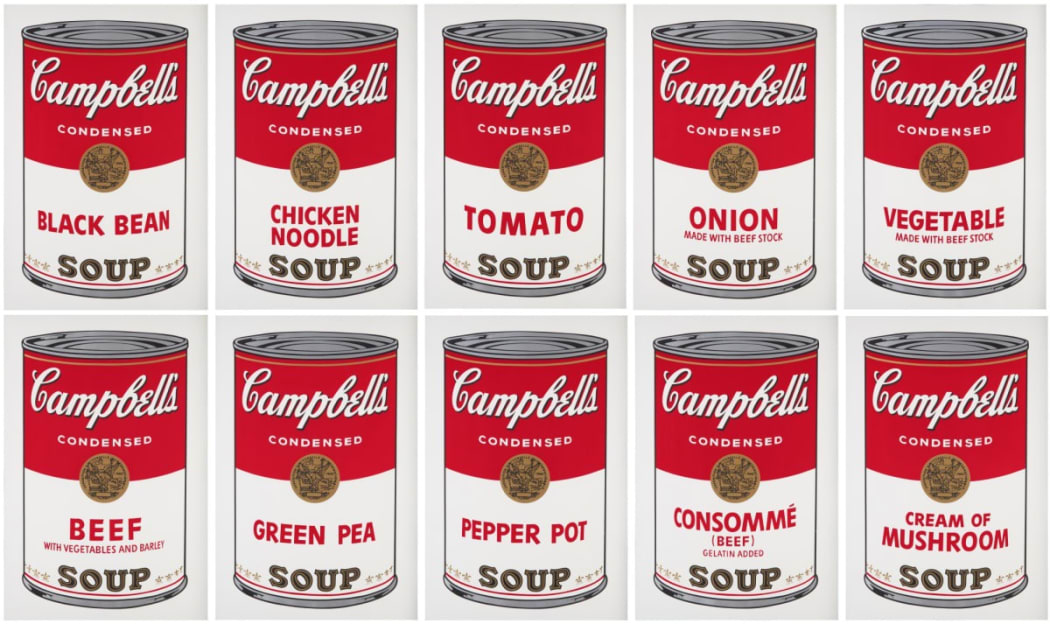
What was pop art?
The Pop Art movement was an art movement that emerged in the mid-20th century, primarily in the United States and the United Kingdom, during the late 1950s and 1960s. It was a reaction against the abstract expressionist movement that had dominated the art world in the preceding decades. Pop Art celebrated everyday popular culture and mass-produced consumer goods, often using images and themes from advertising, comic books, celebrities, and consumer products as source material. The Pop Art movement was known for:
Use of Popular Imagery
Pop artists incorporated images and symbols from popular culture, such as advertisements, comic strips, movie stars, and consumer products, into their artwork.
Techniques of Mass Production
Many Pop Art works were created using commercial printing techniques, such as screen printing, which allowed artists to reproduce images with a mass-produced quality, mirroring the consumer culture they critiqued.
Vivid Colours
Pop Art pieces often featured vibrant and bold colours, which added to their visually striking appeal.
Use of Irony and Critique
Pop Art was often characterised by a sense of irony and a critical perspective on consumerism, mass media, and celebrity culture. It both celebrated and critiqued the excesses and shallowness of modern society.
Repetition and Multiplicity
Repetition of images and motifs was a common technique in Pop Art, reflecting the repetitive nature of mass production and consumer culture.
The Pop Art movement had a significant impact on the art world, challenging traditional notions of fine art and expanding the boundaries of what could be considered art. It blurred the lines between high and low culture and played a crucial role in the cultural commentary of the time, reflecting the changing landscape of post-World War II America and the rise of consumerism.
What was the street art movement?
The street art movement is a cultural and artistic movement that emerged primarily in the 20th century, with its roots in graffiti and public art. It gained significant popularity during the 1970s and has continued to evolve and expand over the years. Here are some key points and characteristics of the street art movement:
Graffiti Roots
Street art has its origins in graffiti, which involves writing or drawing on walls and surfaces in public spaces. Early graffiti artists often used pseudonyms or "tags" to leave their marks on urban environments. This can be traced back even further to artist’s such as Keith Haring who have inspired both Warhol and Banksy.
Urban Expression
Street art is an urban form of expression, and it often reflects the social, political, and cultural issues of the cities where it is created. Street artists use public spaces as their canvas to communicate their messages to a wider audience.
Individual and Collective Efforts
Street art can be created by individual artists or collectives. Some street artists work alone,
Social and Political Commentary
Many street artists use their work to comment on social and political issues, such as inequality, racism, environmental concerns, and more. Street art often serves as a platform for activism and raising awareness.
Commercialisation
While street art began as an underground movement, it has also been commercialised to some extent. Some street artists have transitioned into selling their work through galleries or licensing their designs for commercial products.
Themes
Thematically, there are a multitude of concepts that tie both Warhol and Banksy together, The former, predominantly, was known for his exploration of daily life chronicling and documenting the American experience as he saw it. Drawing inspiration from daily objects, celebrities and consumerism - Warhol’s output witnessed the artist exploring the world around him and uniquely highlighting both the ideals that the society presented and its underbelly through series such as “Death and Destruction”. Banksy, whilst exploring similar themes around consumerism, often is more aggressive in his critique whilst Warhol remains opaque and, at times, enigmatic. Banksy will often look into power dynamics through exploring the concepts of power and authority - again through a barbed lens that lends itself to critiquing the system.
Kate vs Marilyn Monroe
Strike a pose! The colourful and bright work, Kate by Banksy was originally created in 2006 and released as an edition of signed prints. A further series was produced of 20 prints in a range of bright colours: 20 pink, 20 hot pink, 20 purple, 20 green, 20 apricot/gold and 20 blue/grey as well as a rate edition of 12 Artists Proofs. Paying homage to Andy Warhol’s Marilyn Monroe, the work features British supermodel Kate Moss as the subject of the work. Moss, who herself is a globally recognised figure, is treated like a modern-day Madonna in the rare work. A pastiche of pop-art or a commentary on modern icons and celebrity? In 2011, it was rumoured that Banksy gifted a unique version to the supermodel as a wedding gift where she mysteriously discovered the work in the bathroom of her hotel with no sign of entry or exit.
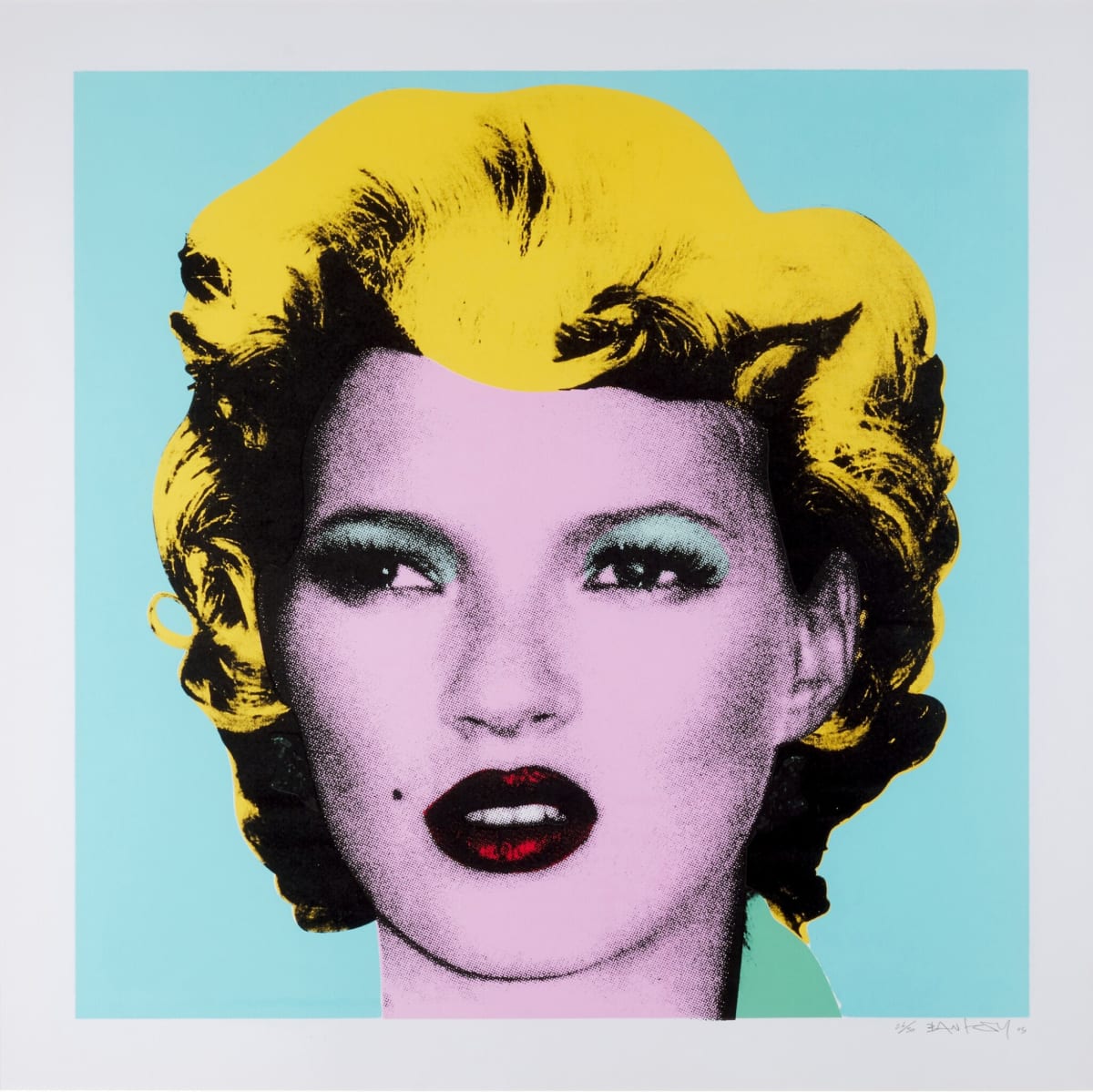
Warhol’s source material for the Marilyn Monroe portfolio is a publicity still from Marilyn’s 1953 film, Niagara. At the time of the screenprint’s creation, Marilyn Monroe had been dead for five years: yet her image was still omnipresent, both in the media and in the American psyche. Warhol has cropped the original image, granting the viewer an intimate and close-up view of the starlet’s face. The artist highlights and magnifies the most unique features of the actress’s beauty: in every example of the suite, her eyes, trademark beauty spot and lips are emboldened by Warhol’s saturation of colour. Integral to the artist’s screen printing process is the imperfection of ink, creating a lack of subtlety and fine line: Marilyn’s lips appear overdrawn, and her eyeshadow gaudy. This utterly striking, yet somewhat visually jarring effect evokes the obtrusive media circus surrounding the star, and her heavily constructed public image. In repeating the identical publicity still of Monroe ten times, the seriality of Warhol’s portfolio speak to both the literal seriality of her image – reproduced thousands of times in publications and on television, as well as the metaphorical many ‘Marilyn’s: Norma Jean, the orphan before her Hollywood career.
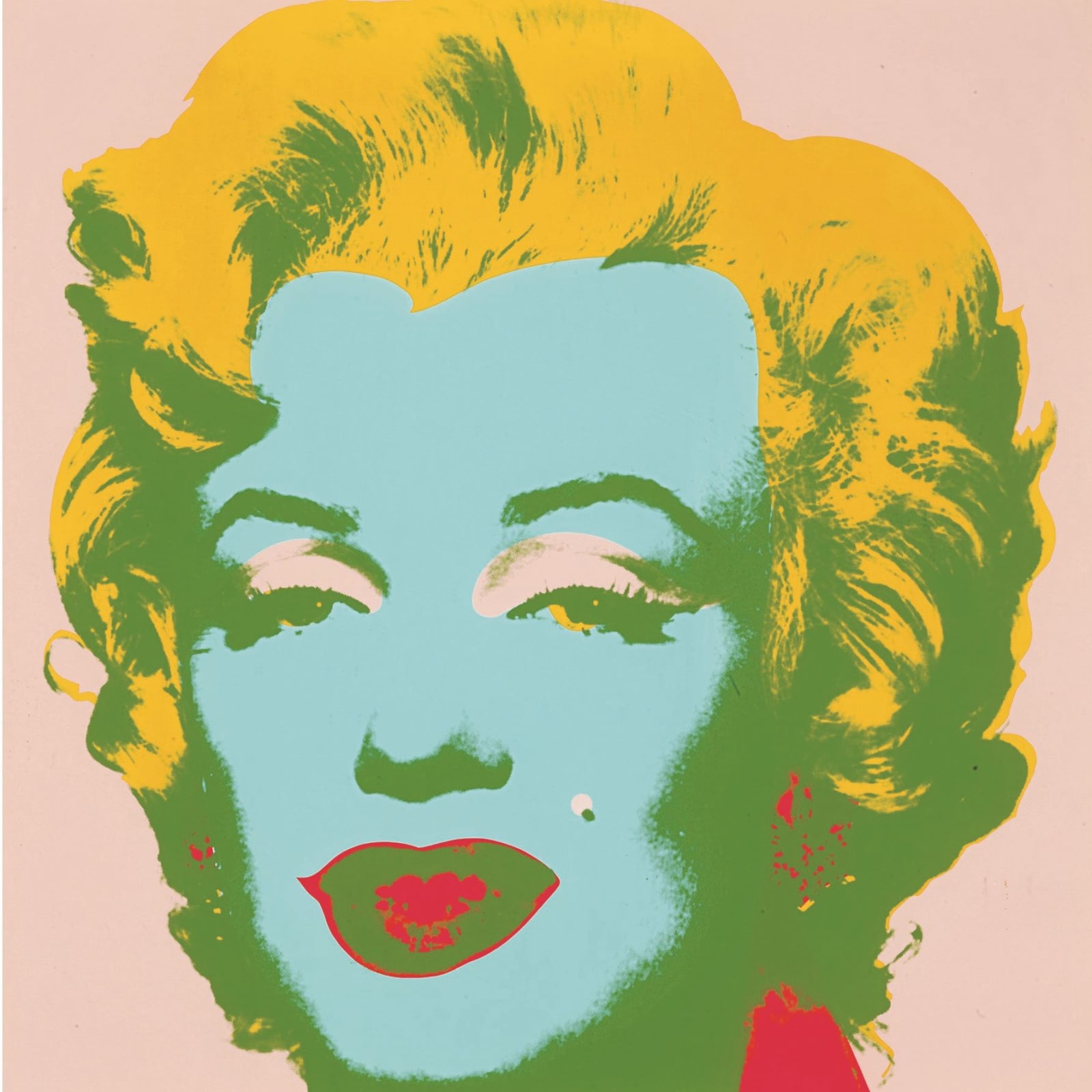
Soup Can
Released in 2006, Banksy’s Soup Can series reimagines the famous Andy Warhol Campbell’s Soup cans of which they are a homage. The fabled series by Warhol is turned on its head as, instead of the typically American brand Campbell’s being used, Banksy opts for Tesco’s Value range and critiques wealth inequality.
Released as a signed version of 50 and unsigned version of 250 in a blue red and white colourway by Pictures on Walls in 2005, Banksy’s Soup Can can trace its inspiration to Andy Warhol’s famous series Campbell Soup Can. Certainly less romantic than the now mythologised Campbell’s soup brand, Banksy opts to use the fat less glamorous Tesco Value branding and logo for his work - firmly British and firmly marginalised as fare for the working classes. Taking the idea even further, Banksy, much like Warhol, released the motif in a range of different versions - in this case different colourways instead of flavours. In addition to the main blue, red and white colourway Banksy also released other colourways each consisting of an edition of 10. A total edition of 300 (50 signed and 250 Soup Can unsigned prints) was issued for the different colourways in the series. Soup Can’s total release numbers some 28 colour variations consisting of 10 signed prints in each colour, and totals 280 signed prints in total.
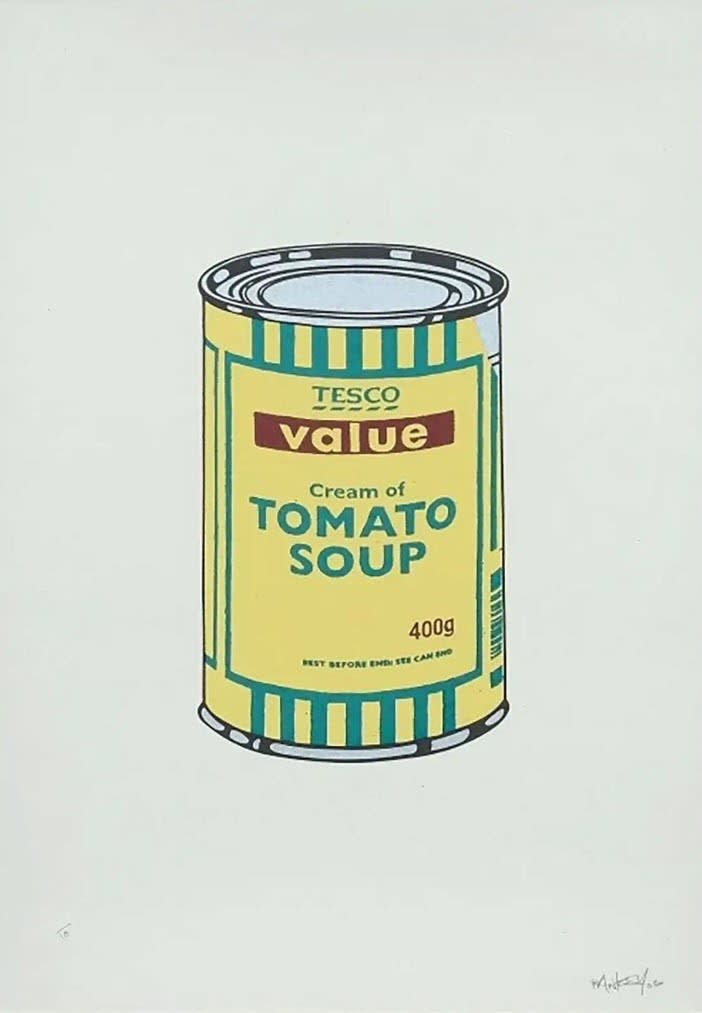
Campbell’s Soup I, produced in 1968, is the first of Warhol’s Campbell’s Soup portfolios, produced in 1968, with a second volume released a year later in 1969. A now quintessential icon of Modern art, the portfolio comprises of ten screenprints, each of a different variety of Campbell’s soup. Warhol’s Campbell Soup cans are a bastion of Pop Art, yet when the artist first silk-screened the everyday for his 1962 exhibition at the Ferus Gallery, Campbell’s Soup Cans, it sent shockwaves through the art world. A mass-produced product elevated to the status of art abruptly called into question the very nature of artistic representation. To cultural critic Jean Baudrillard, Warhol’s soup cans ‘releases us from the need to decide between beautiful and ugly, between real and unreal, between transcendence and immanence’.
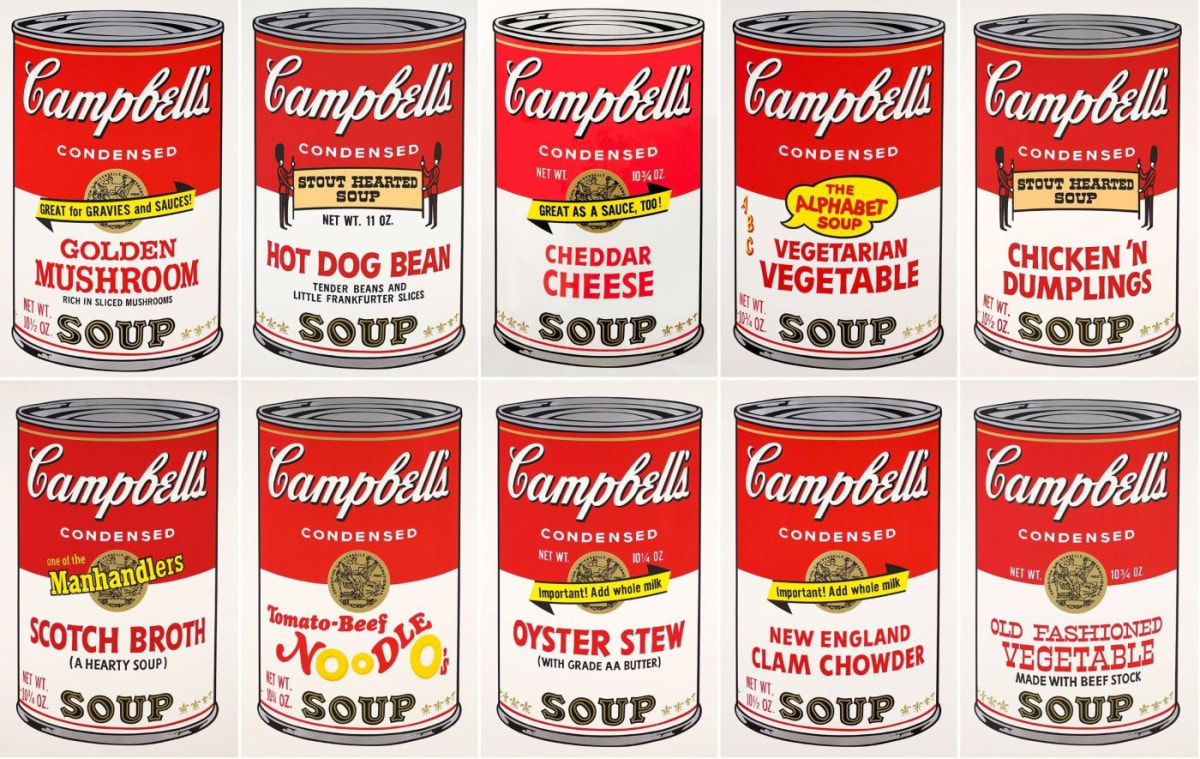
For more information on any of the works featured, contact sales@andipa.com or call +44 (0)20 7589 2371 for further information.